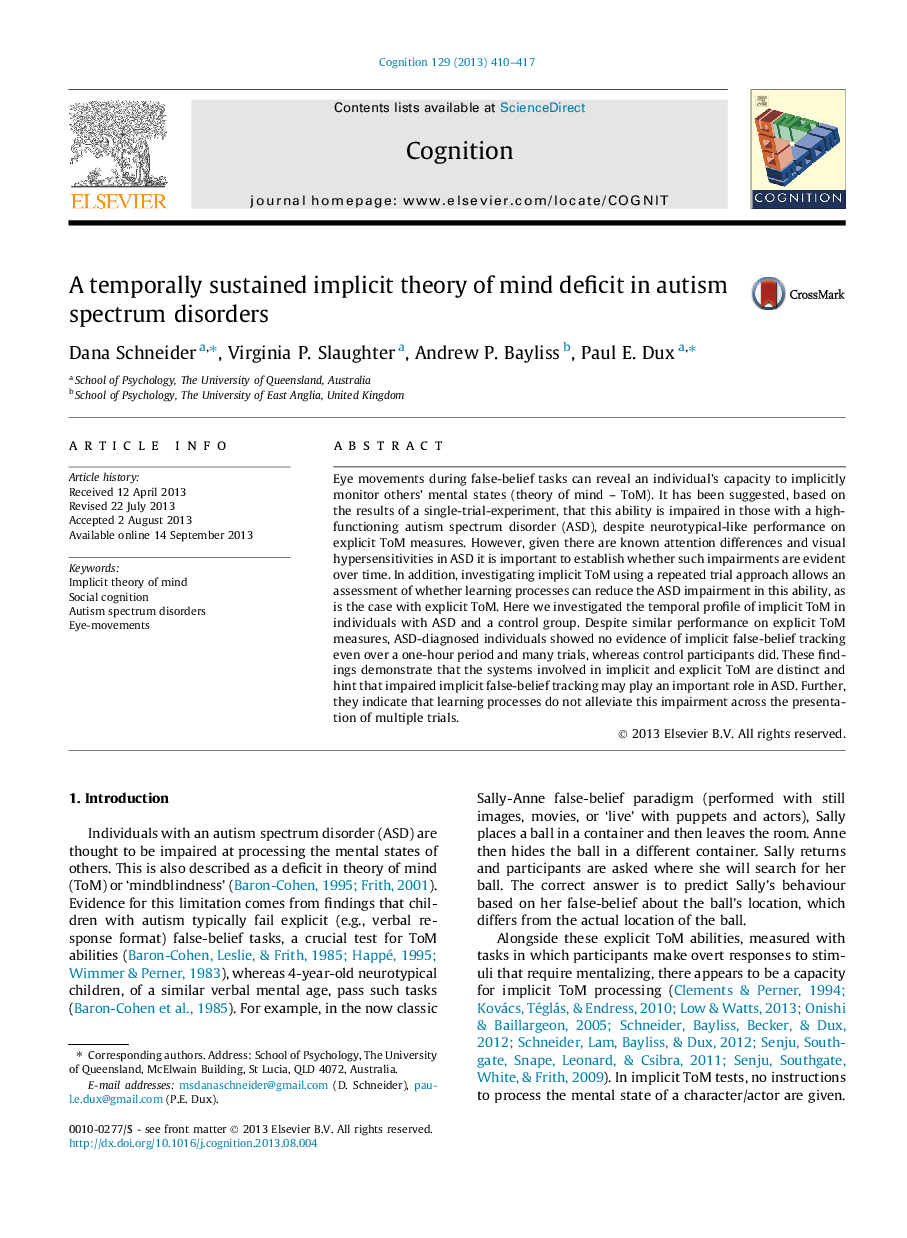| Article ID | Journal | Published Year | Pages | File Type |
|---|---|---|---|---|
| 926394 | Cognition | 2013 | 8 Pages |
•Individuals with ASD have a specific deficit in implicit ToM processing.•The ASD implicit ToM impairment is sustained over a prolonged time period.•The ASD implicit ToM deficit reflects a specific false-belief tracking limitation.•Individuals with ASD do not display spontaneous learning during implicit ToM tasks.
Eye movements during false-belief tasks can reveal an individual’s capacity to implicitly monitor others’ mental states (theory of mind – ToM). It has been suggested, based on the results of a single-trial-experiment, that this ability is impaired in those with a high-functioning autism spectrum disorder (ASD), despite neurotypical-like performance on explicit ToM measures. However, given there are known attention differences and visual hypersensitivities in ASD it is important to establish whether such impairments are evident over time. In addition, investigating implicit ToM using a repeated trial approach allows an assessment of whether learning processes can reduce the ASD impairment in this ability, as is the case with explicit ToM. Here we investigated the temporal profile of implicit ToM in individuals with ASD and a control group. Despite similar performance on explicit ToM measures, ASD-diagnosed individuals showed no evidence of implicit false-belief tracking even over a one-hour period and many trials, whereas control participants did. These findings demonstrate that the systems involved in implicit and explicit ToM are distinct and hint that impaired implicit false-belief tracking may play an important role in ASD. Further, they indicate that learning processes do not alleviate this impairment across the presentation of multiple trials.
